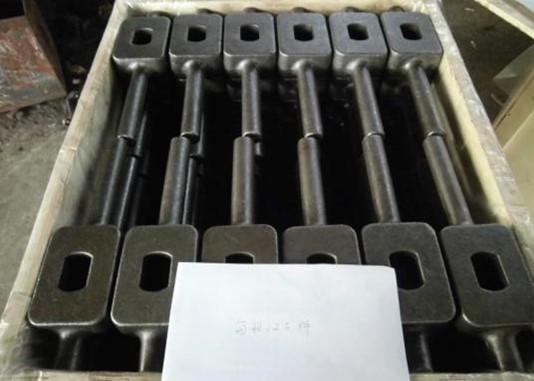Introduction:
Forged slacker adjuster rods are critical components in many mechanical systems, particularly in heavy-duty vehicles like trucks, buses, and trailers. These rods play a key role in brake systems, ensuring proper adjustment and tension in the brake mechanism. This article delves into the technical aspects of forged slacker adjuster rods, exploring their manufacturing process, material properties, design considerations, and their role in braking systems.
Manufacturing Process:
Forging is the primary manufacturing process used to produce slacker adjuster rods. Forging involves the deformation of metal using compressive forces, typically delivered through a hammer or die. The process refines the metal’s grain structure, resulting in a product with superior strength and durability compared to components made through casting or machining.
Material Selection: The choice of material is crucial in the forging process. Slacker adjuster rods are usually made from high-strength steel alloys, such as 4140 or 1045, which offer excellent tensile strength and toughness. The material is selected based on the required mechanical properties, such as yield strength, elongation, and hardness.
Forging Process: The forging process typically involves heating the metal to a temperature where it becomes malleable but does not melt. The heated metal is then placed between two dies and compressed into the desired shape. This process can be done using open-die, closed-die, or impression-die forging, depending on the complexity of the rod’s design.
Heat Treatment: After forging, the slacker adjuster rods often undergo heat treatment processes such as quenching and tempering. Quenching involves rapidly cooling the metal in water or oil to increase hardness, while tempering involves reheating the metal to a specific temperature to reduce brittleness and improve toughness.
Machining and Finishing: The forged rods may require further machining to achieve precise dimensions and surface finish. This step ensures that the rods fit perfectly within the braking system. Additional finishing processes like coating or plating may also be applied to enhance corrosion resistance.
Material Properties:
The mechanical properties of forged slacker adjuster rods are critical to their performance in braking systems. Key properties include:
Tensile Strength: Forged rods exhibit high tensile strength, enabling them to withstand the significant forces exerted during braking.
Toughness: The forging process imparts toughness to the rods, allowing them to absorb energy and resist fracture under impact loads.
Fatigue Resistance: Forged components have superior fatigue resistance due to their refined grain structure, which is essential for parts that experience cyclic loading.
Corrosion Resistance: Depending on the material and finishing process, forged rods can also offer good corrosion resistance, which is vital for components exposed to harsh environments.
Design Considerations:
Designing a slacker adjuster rod involves careful consideration of various factors to ensure optimal performance:
Load Capacity: The rod must be designed to handle the maximum load expected during braking without deforming or failing.
Post time: Aug-14-2024





